SNVS191F November 2002 – October 2016 LM2705
PRODUCTION DATA.
- 1 Features
- 2 Applications
- 3 Description
- 4 Revision History
- 5 Pin Configuration and Functions
- 6 Specifications
- 7 Detailed Description
- 8 Application and Implementation
- 9 Power Supply Recommendations
- 10Layout
- 11Device and Documentation Support
- 12Mechanical, Packaging, and Orderable Information
Package Options
Mechanical Data (Package|Pins)
- DBV|5
Thermal pad, mechanical data (Package|Pins)
Orderable Information
6 Specifications
6.1 Absolute Maximum Ratings
over operating free-air temperature range (unless otherwise noted)(1)(2)| MIN | MAX | UNIT | ||
|---|---|---|---|---|
| VIN | 7.5 | V | ||
| SW voltage | 21 | V | ||
| FB voltage | 2 | V | ||
| SHDN voltage | 7.5 | V | ||
| Maximum junction temperature, TJ(3) | 150 | °C | ||
| Lead temperature | Soldering (10 seconds) | 300 | °C | |
| Vapor phase (60 seconds) | 215 | °C | ||
| Infrared (15 seconds) | 220 | °C | ||
| Storage temperature, Tstg | –65 | 150 | °C | |
(1) Stresses beyond those listed under Absolute Maximum Ratings may cause permanent damage to the device. These are stress ratings only, which do not imply functional operation of the device at these or any other conditions beyond those indicated under Recommended Operating Conditions. Exposure to absolute-maximum-rated conditions for extended periods may affect device reliability.
(2) If Military/Aerospace specified devices are required, contact the TI Sales Office/Distributors for availability and specifications.
(3) The maximum allowable power dissipation is a function of the maximum junction temperature, TJ(MAX), the junction-to-ambient thermal resistance, RθJA, and the ambient temperature, TA. See Thermal Information for the thermal resistance. The maximum allowable power dissipation at any ambient temperature is calculated using: PD(MAX) = (TJ(MAX) − TA) / RθJA. Exceeding the maximum allowable power dissipation will cause excessive die temperature.
6.2 ESD Ratings
| VALUE | UNIT | |||
|---|---|---|---|---|
| V(ESD) | Electrostatic discharge | Human-body model (HBM), per ANSI/ESDA/JEDEC JS-001(1) | ±2000 | V |
| Machine model(2) | ±200 | |||
(1) JEDEC document JEP155 states that 500-V HBM allows safe manufacturing with a standard ESD control process.
(2) ESD susceptibility using the machine model is 150 V for SW pin.
6.3 Recommended Operating Conditions
over operating free-air temperature range (unless otherwise noted)| MIN | NOM | MAX | UNIT | ||
|---|---|---|---|---|---|
| Supply voltage | 2.2 | 7 | V | ||
| SW voltage, maximum | 20.5 | V | |||
| Junction temperature(1) | –40 | 125 | °C | ||
(1) All limits specified at room temperature and at temperature extremes. All room temperature limits are 100% production tested or specified through statistical analysis. All limits at temperature extremes are specified via correlation using standard statistical quality control (SQC) methods. All limits are used to calculate average outgoing quality level (AOQL).
6.4 Thermal Information
| THERMAL METRIC(1) | LM2705 | UNIT | |
|---|---|---|---|
| DBV (SOT-23) | |||
| 5 PINS | |||
| RθJA | Junction-to-ambient thermal resistance | 164.9 | °C/W |
| RθJC(top) | Junction-to-case (top) thermal resistance | 116.8 | °C/W |
| RθJB | Junction-to-board thermal resistance | 27.8 | °C/W |
| ψJT | Junction-to-top characterization parameter | 13.6 | °C/W |
| ψJB | Junction-to-board characterization parameter | 27.3 | °C/W |
(1) For more information about traditional and new thermal metrics, see Semiconductor and IC Package Thermal Metrics.
6.5 Electrical Characteristics
Unless otherwise specified, specifications apply for TJ = 25°C and VIN = 2.2 V.| PARAMETER | TEST CONDITIONS | MIN(1) | TYP(2) | MAX (1) |
UNIT | |
|---|---|---|---|---|---|---|
| IQ | Device disabled | FB = 1.3 V | 40 | µA | ||
| FB = 1.3 V, –40°C to 125°C | 70 | |||||
| Device enabled | FB = 1.2 V | 235 | ||||
| FB = 1.2 V, –40°C to 125°C | 300 | |||||
| Shutdown | SHDN = 0 V | 0.01 | 2.5 | |||
| VFB | Feedback trip point | 1.237 | V | |||
| –40°C to 125°C | 1.189 | 1.269 | ||||
| ICL | Switch current limit | 150 | mA | |||
| –40°C to 125°C | 100 | 180 | ||||
| IB | FB pin bias current | FB = 1.23 V(3) | 30 | nA | ||
| FB = 1.23 V, –40°C to 125°C(3) | 120 | |||||
| VIN | Input voltage | –40°C to 125°C | 2.2 | 7 | V | |
| RDSON | Switch RDSON | 0.7 | Ω | |||
| –40°C to 125°C | 1.6 | |||||
| TOFF | Switch off time | 400 | ns | |||
| ISD | SHDN pin current | SHDN = VIN, TJ = 25°C | 0 | 80 | nA | |
| SHDN = VIN, TJ = 125°C | 15 | |||||
| SHDN = GND | 0 | |||||
| IL | Switch leakage current | VSW = 20 V | 0.05 | 5 | µA | |
| UVP | Input undervoltage lockout | ON/OFF threshold | 1.8 | V | ||
| VFB hysteresis | Feedback hysteresis | 8 | mV | |||
| SHDN threshold | SHDN low | 0.7 | V | |||
| –40°C to 125°C | 0.3 | |||||
| SHDN high | 0.7 | |||||
| –40°C to 125°C | 1.1 | |||||
(1) All limits specified at room temperature and at temperature extremes. All room temperature limits are 100% production tested or specified through statistical analysis. All limits at temperature extremes are specified via correlation using standard statistical quality control (SQC) methods. all limits are used to calculate average outgoing quality level (AOQL).
(2) Typical numbers are at 25°C and represent the most likely norm.
(3) Feedback current flows into the pin.
6.6 Typical Characteristics
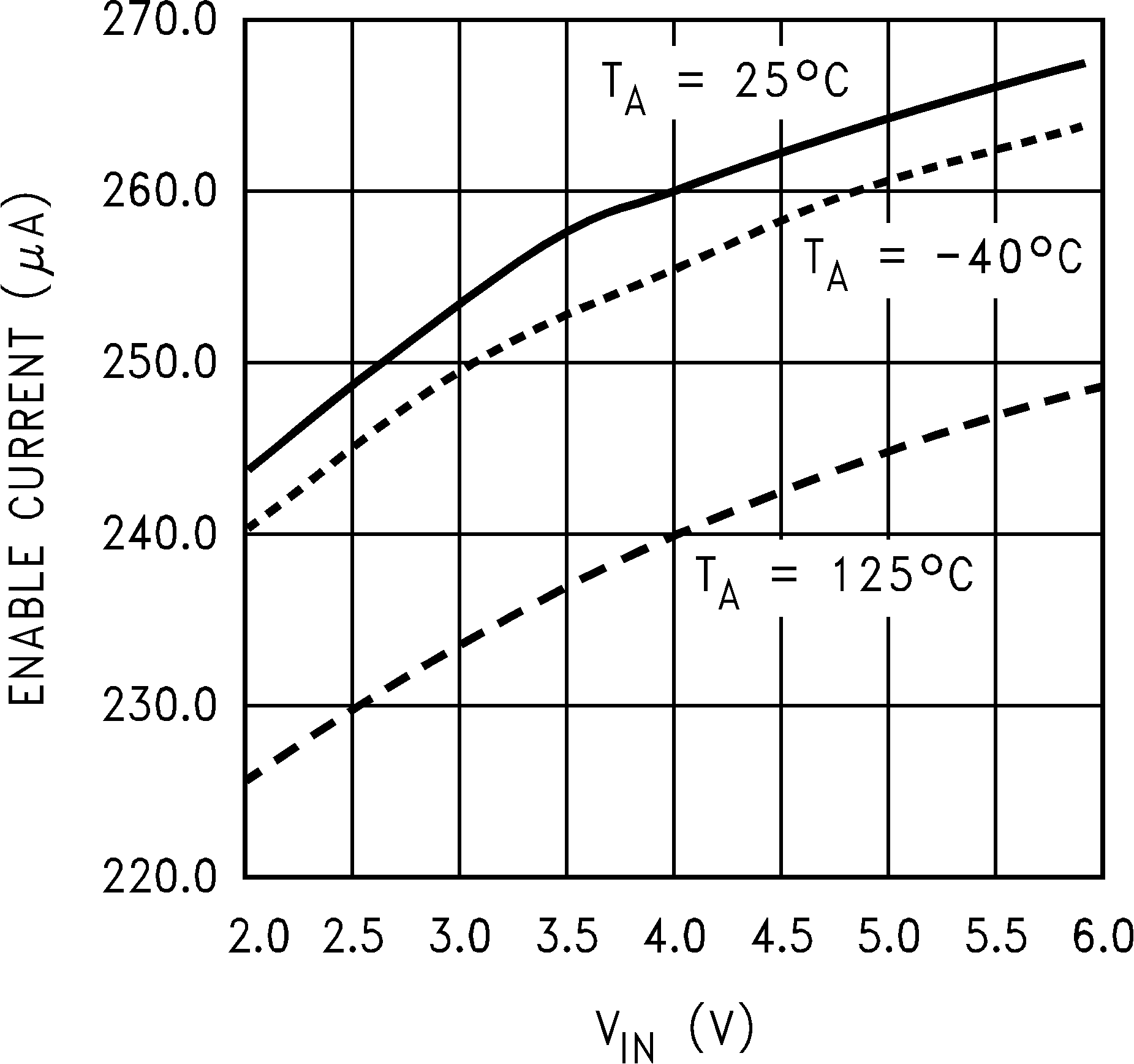
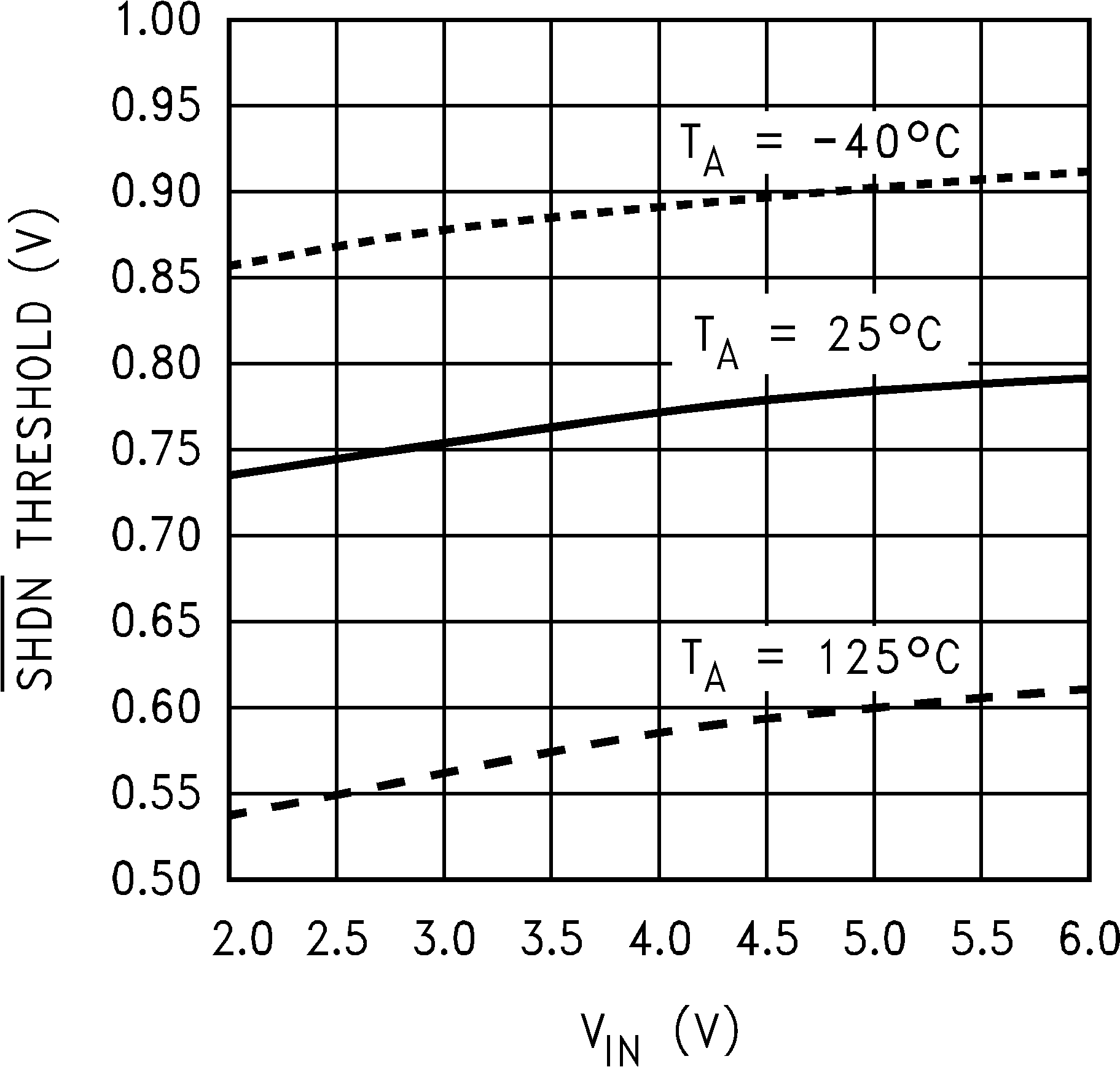
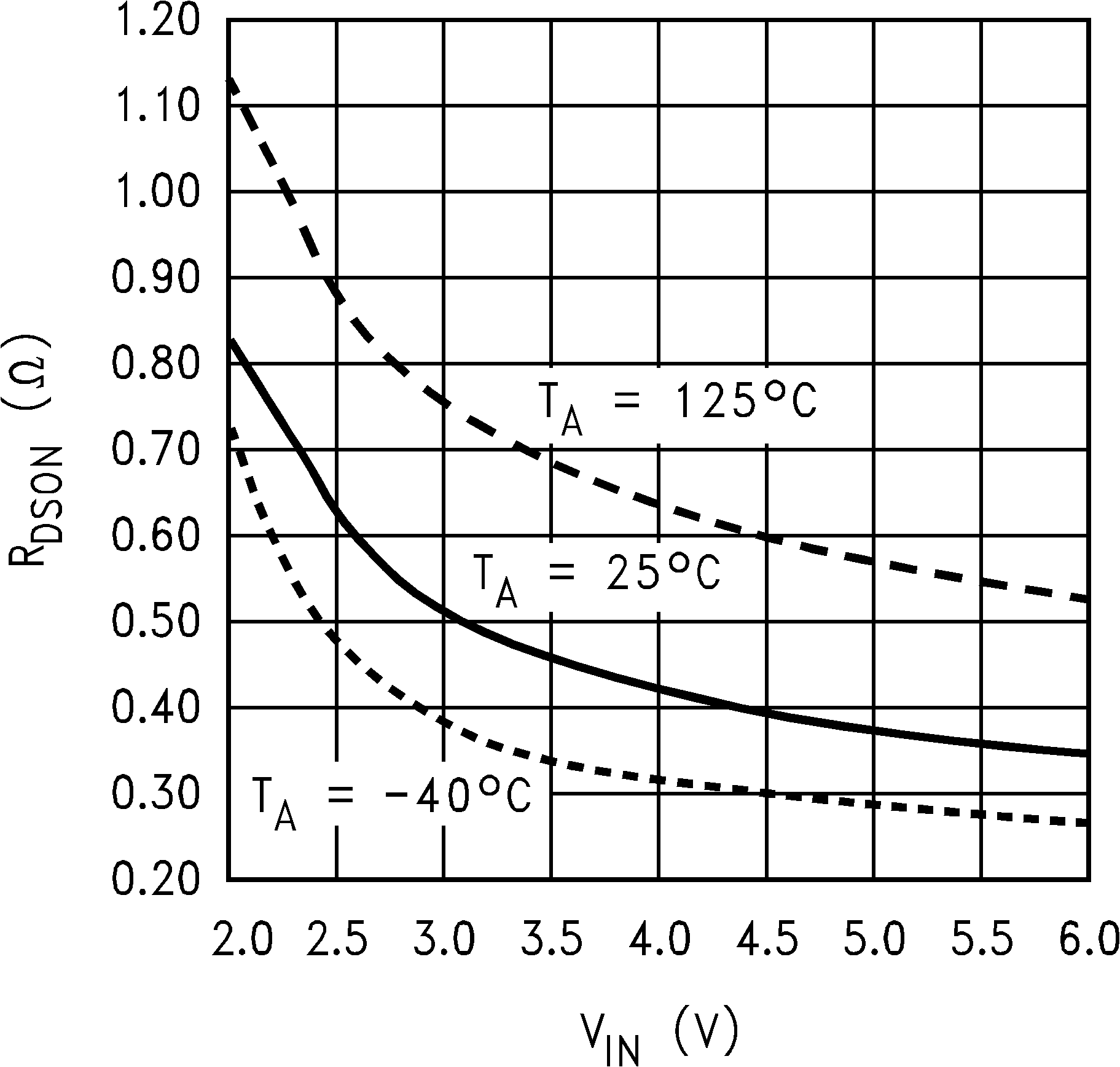
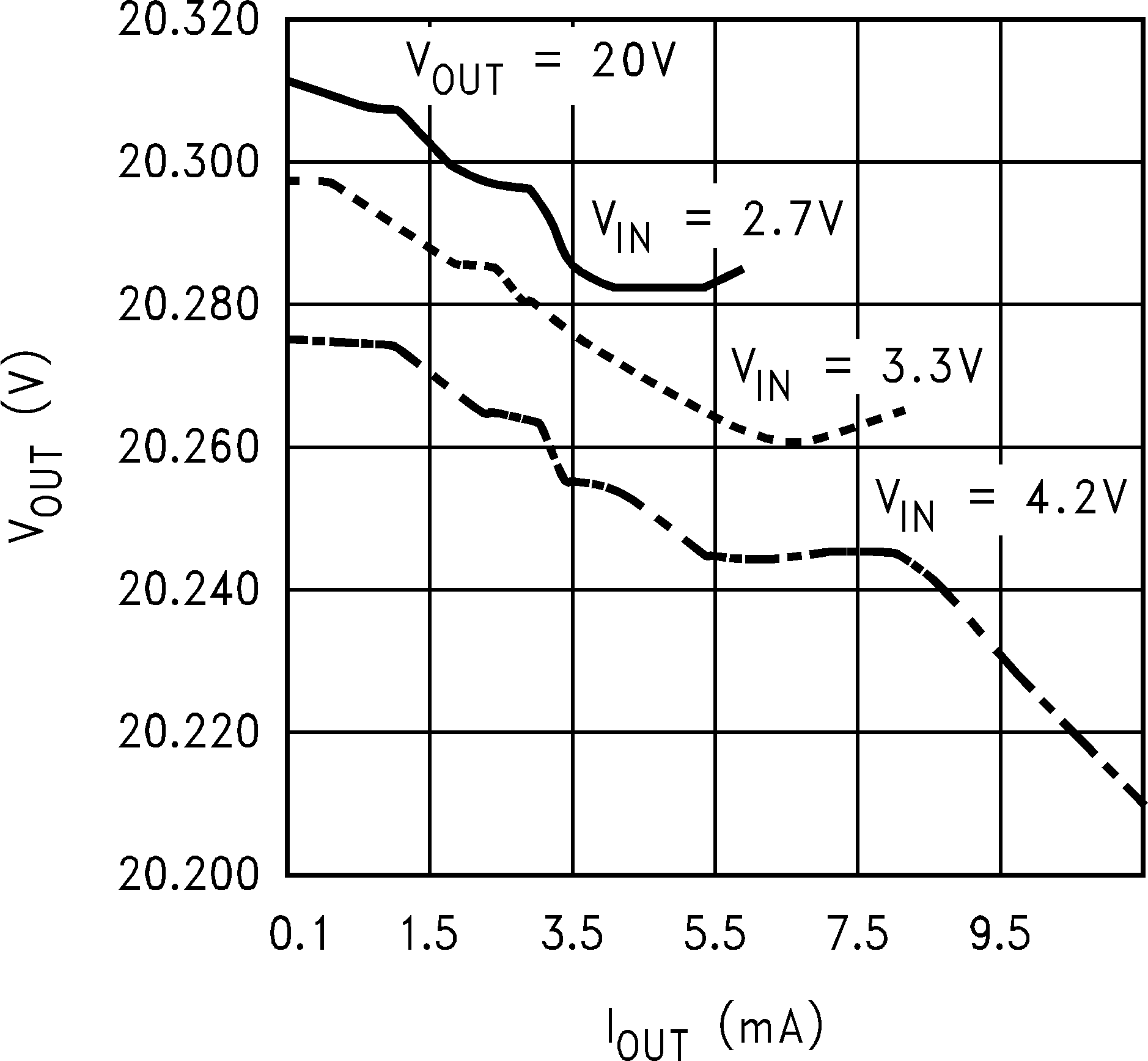
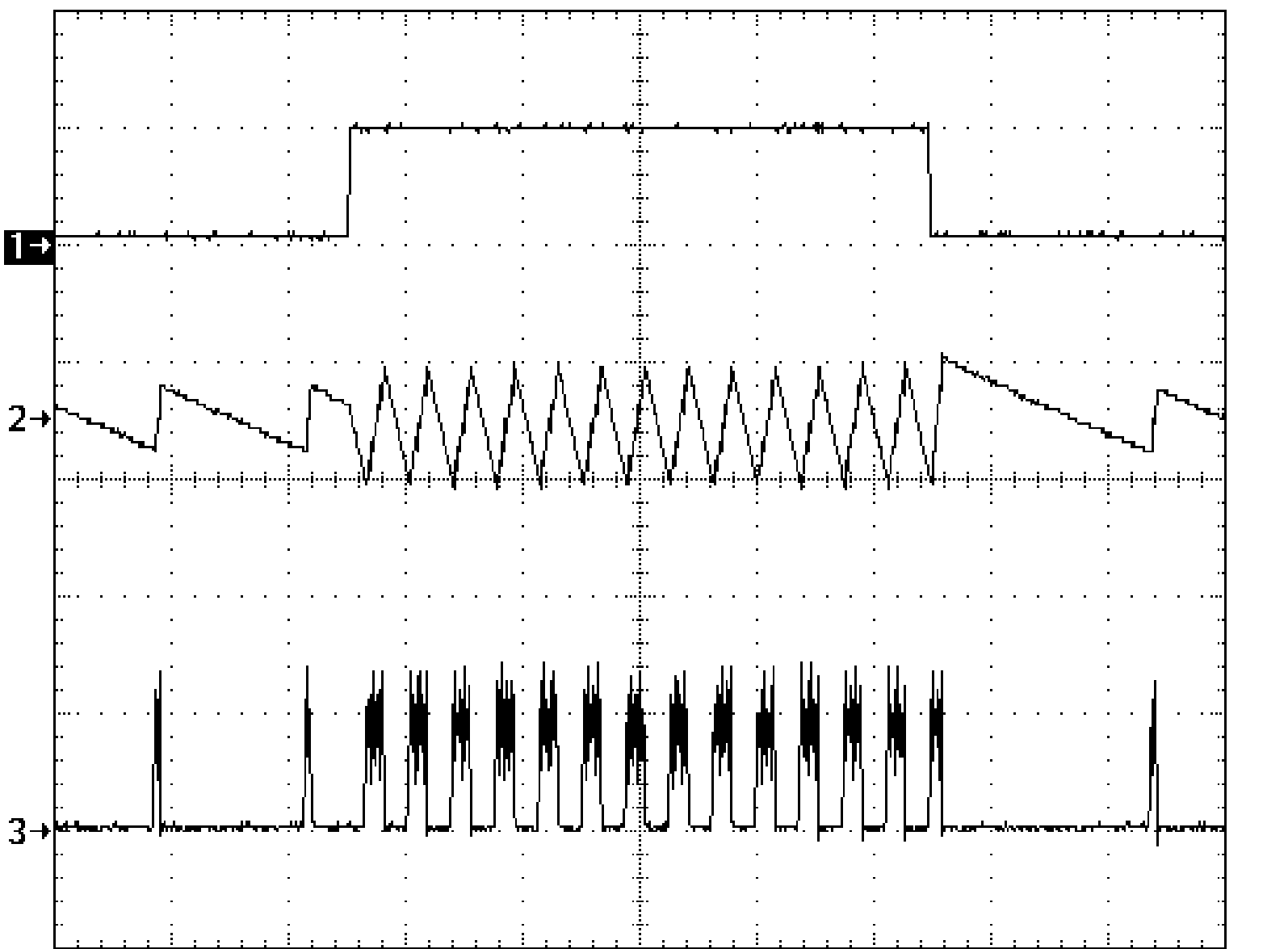
| 1) Load: 0.5 mA to 5 mA to 0.5 mA, DC | VOUT = 20 V | |
| 2) VOUT: 200 mV/div, AC | VIN = 3 V | |
| 3. IL: 100 mA/div, DC | T = 100 µs/div | |
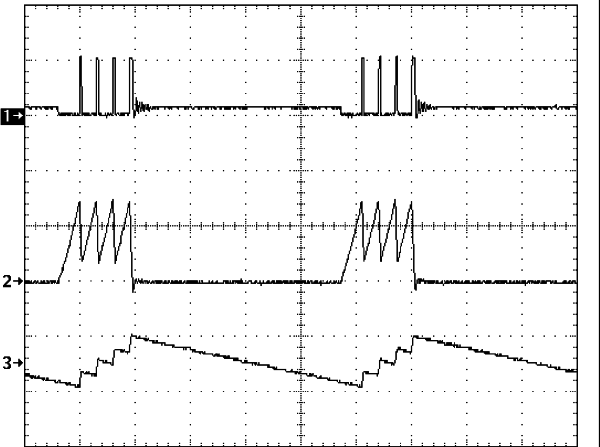
| 1. VSW: 20 V/div, DC | VIN = 2.7 V | VOUT = 20 V | ||
| 2. Inductor Current: 100 mA/div, DC | IOUT = 2.5 mA | |||
| 3. VOUT, 200 mV/div, AC |
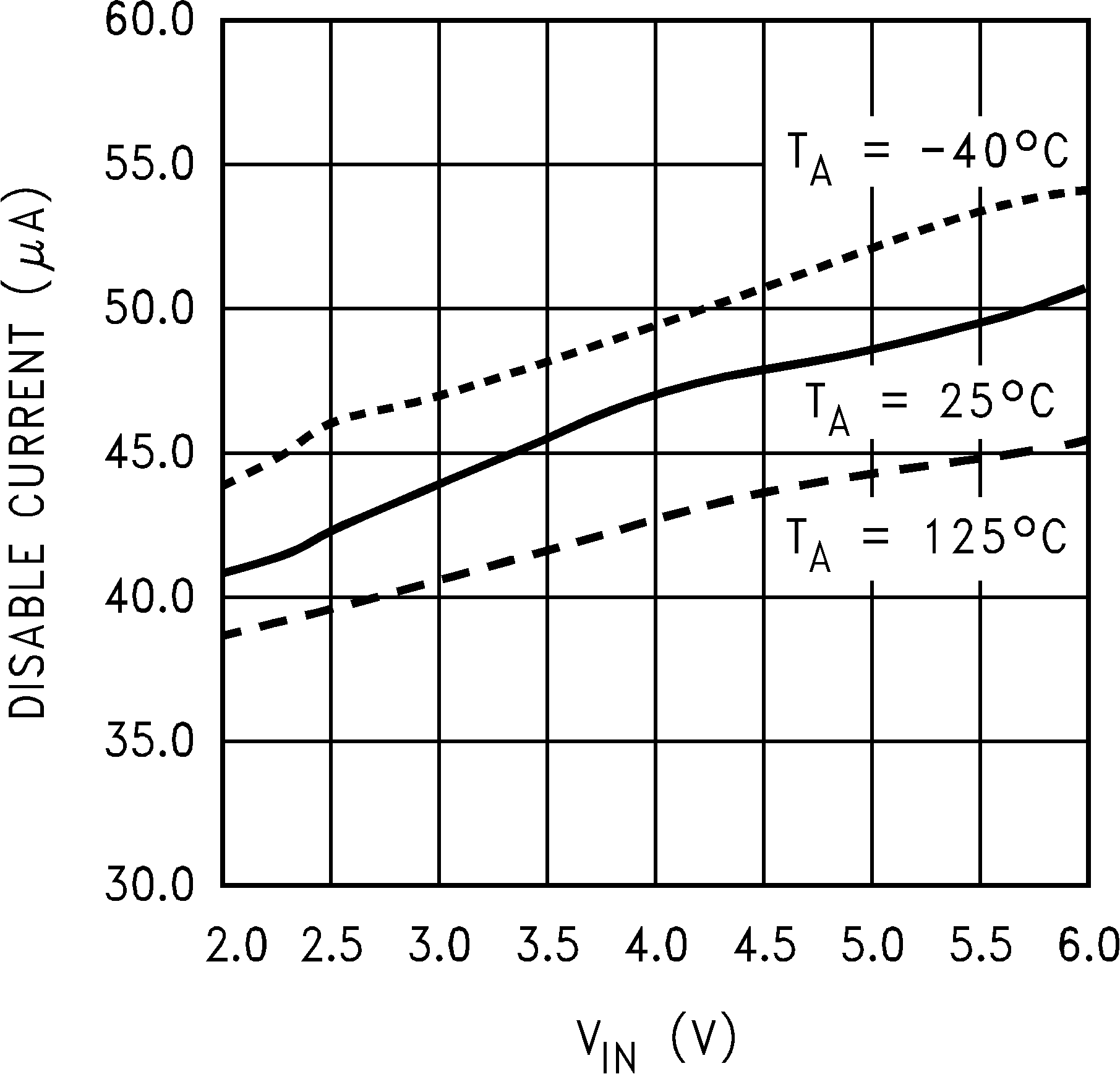
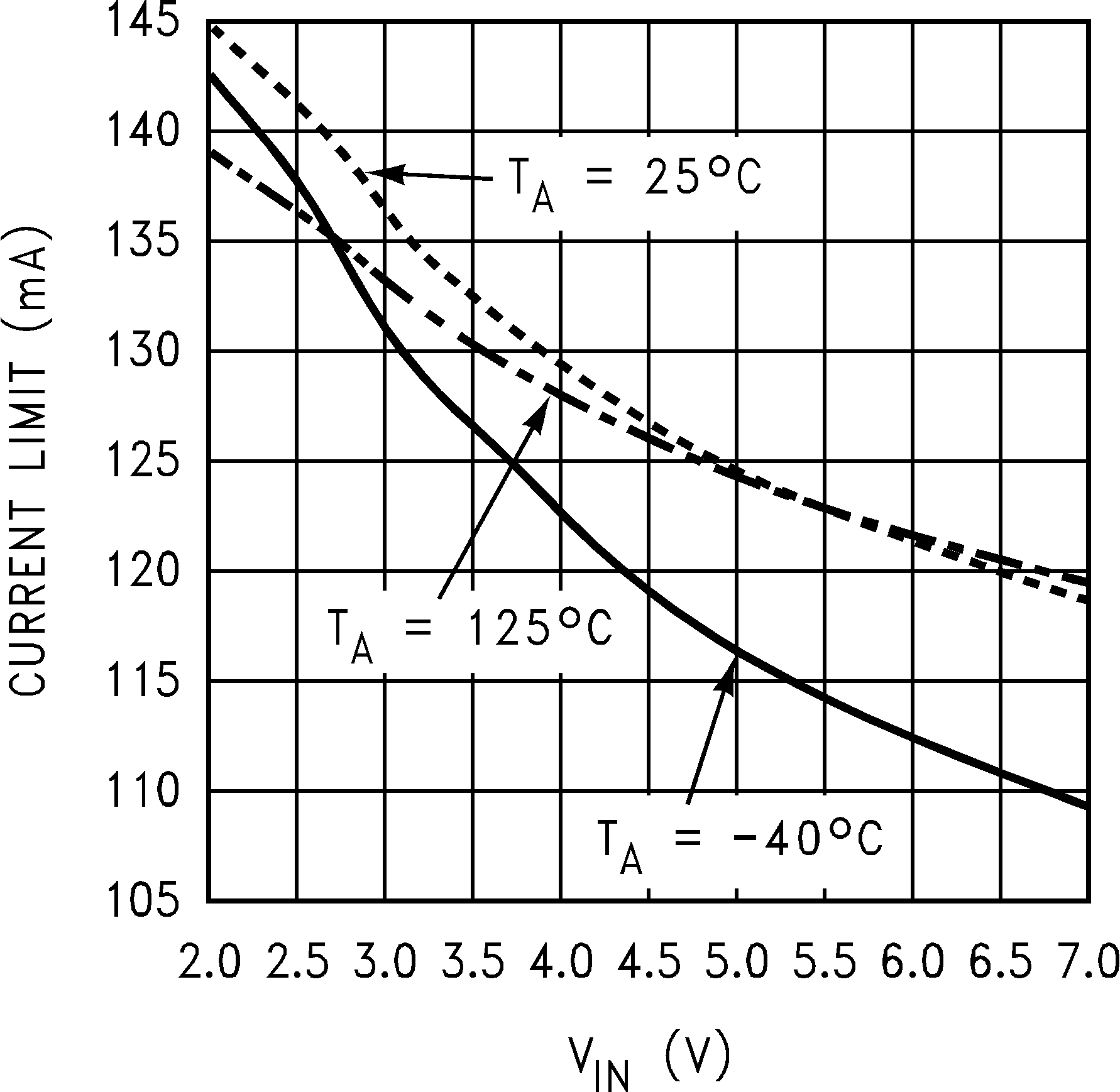
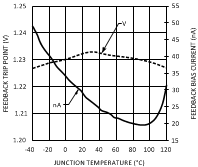
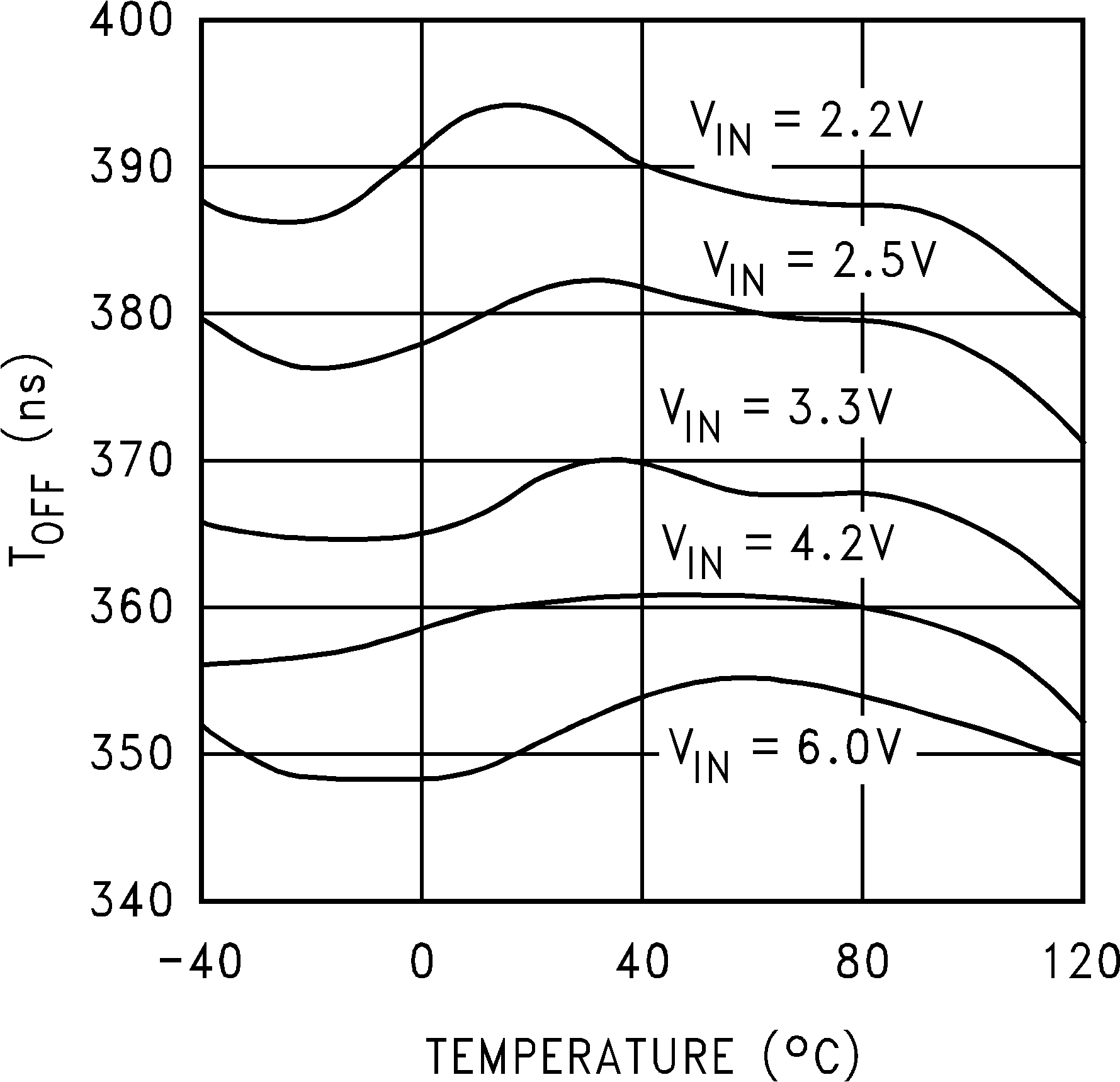
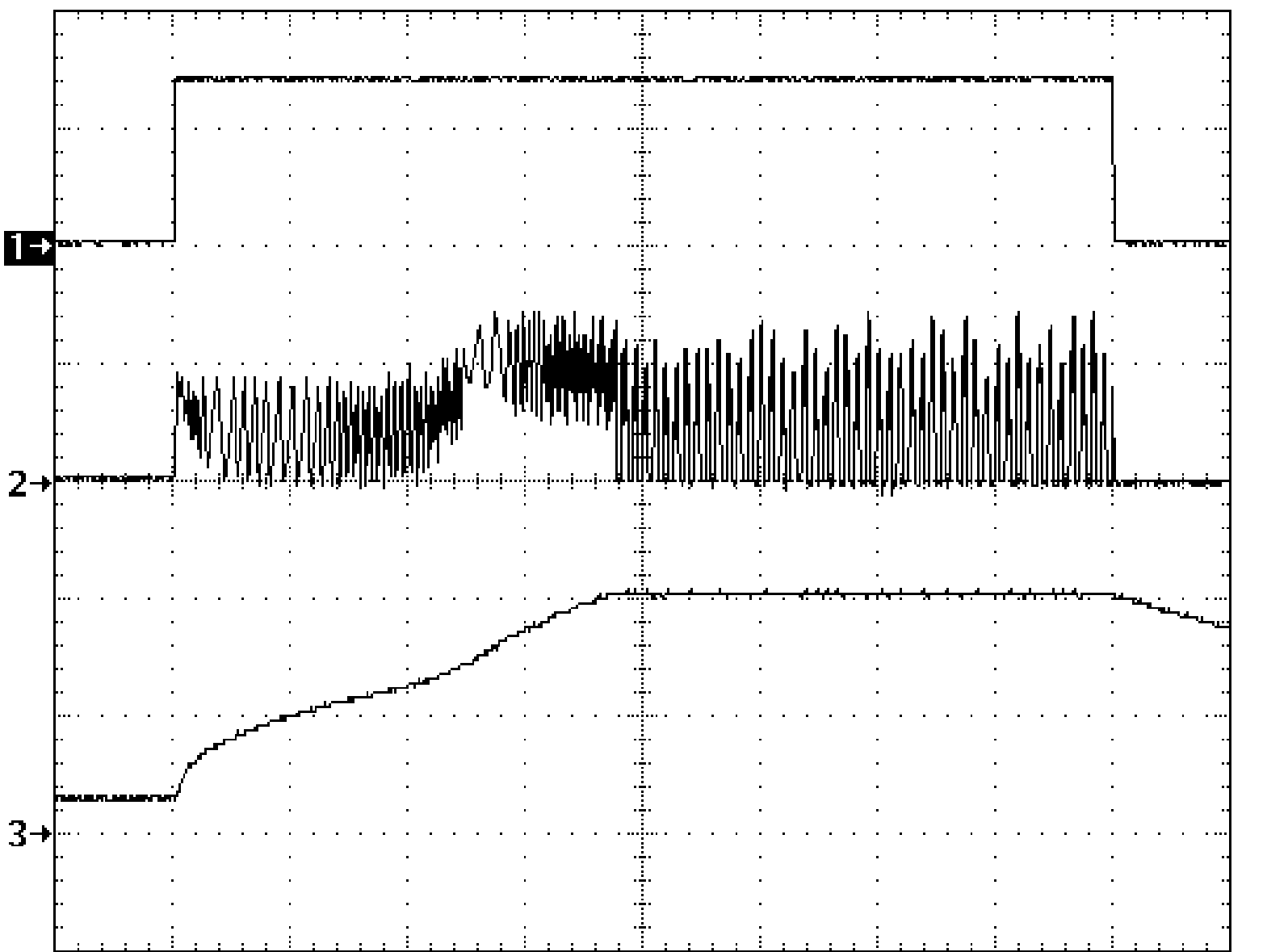
| 1) SHDN: 1 V/div, DC | VIN = 3 V | VOUT = 20 V |
| 2) VOUT: 10 V/div, AC | T = 100 µs/div | RL = 3.9 kΩ |
| 3. IL: 100 mA/div, DC |